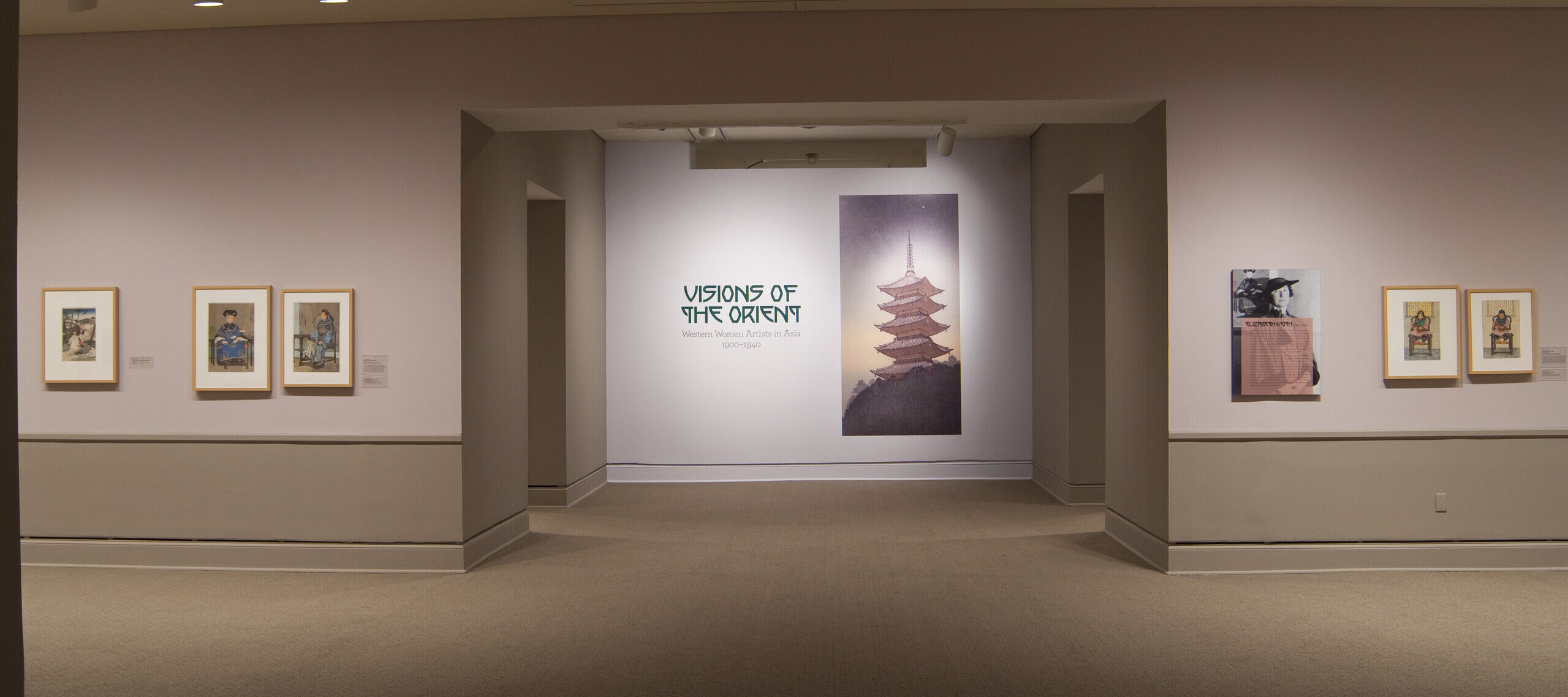Elizabeth Keith is one of four Western women artists featured in Visions of the Orient: Western Women Artists in Asia 1900–1940, on view at NMWA through January 15, 2012. Keith (1877–1956), a self-taught artist born in Scotland, created watercolors and drawings before becoming interested in the East. In 1915, Keith went to Japan to visit her sister, who had married a publisher living in Tokyo. She was captivated by the charm of Japan and Asian culture, and the trip that she had originally planned as a short vacation turned into a nine-year stay.

During this time, Keith travelled across Asia, with the assistance of a network of missionaries and educators. In China, Korea, and the Philippines, Keith painted watercolors of the fascinating scenes she saw. When she returned to Tokyo a year later she held a small exhibition of the watercolors, which caught the attention of the Japanese print publisher Watanabe Shōzaburō. He persuaded Keith to allow his carvers and printers to produce woodblock prints of some of her paintings. As Keith told the story in her book Eastern Windows:
“A few years ago in Tokyo I held an exhibition of water-colour sketches portraying the everyday life of the Koreans. It was the first exhibition of Korean subjects ever held there. The leading colour printer, then a stranger to me, came to the exhibition and strongly advised me to have my water-colour of ‘East Gate, Seoul by Moonlight,’ made into a colour print. He declared that it would be a great success. I took his advice and he was right, for the subject is still the most popular of my prints.”
—Elizabeth Keith, Eastern Windows, 1926
Keith had never created a woodblock before, so she spent the following two years studying the technique and soon began carving and printing her own works without the aid of Watanabe’s artisans. Keith continued to travel and produce prints that she sold to Asian as well as Western audiences. In an unpublished interview from 1935, Keith describes the allure of woodblock prints:
“The cutting and printing of blocks is now so common that children learn it at school. The process is demonstrated yearly in Tokyo when any exhibition of prints is being shown; it is even made an attraction at fashionable garden parties for foreign travelers. It holds no secret; the method is known to all. Nevertheless, whenever I have a show of colour prints, I am besieged by people who want to know how it is done.”
—Elizabeth Keith, “An Interview,” unpublished manuscript, 1935

Keith lived in many places and seems not to have stayed in any for very long. In the last decades of her life she lived in England, where she studied color etching; then returned to Japan until the end of World War II, when she moved to the United States. Dr. Kendall Brown, curator of Visions, describes Keith’s intent to create an Orient which she connected with emotionally. In her paintings, woodblock prints, and colored lithographs, Keith sought to capture with ethnographic accuracy the customs and costumes of vanishing Asia.
She lived in the U.S. until her death in 1956, although she maintained a strong connection with Asia, holding an exhibition in Tokyo during the last year of her life. Her talents have become much appreciated and many of her prints, now quite rare, are in public collections and museums. In her lifetime, she had the satisfaction of seeing her prints depicting Asian life acquired by the British Museum, the Musee Guimet in Paris, the National Gallery of Canada, the Honolulu Academy of Arts, and, as an important part of the Murray Warner collection at the Museum of Art at the University of Oregon, the lender of many of the prints on view at NMWA in Visions of the Orient.
